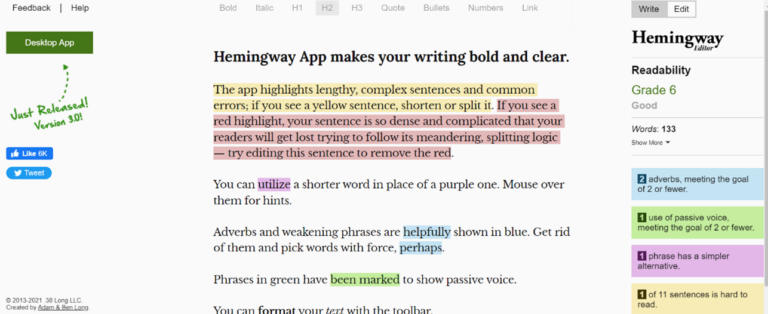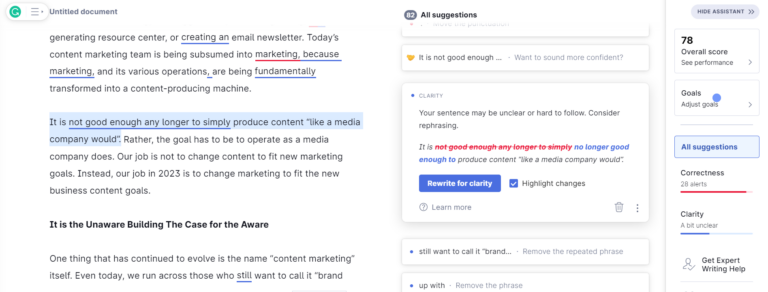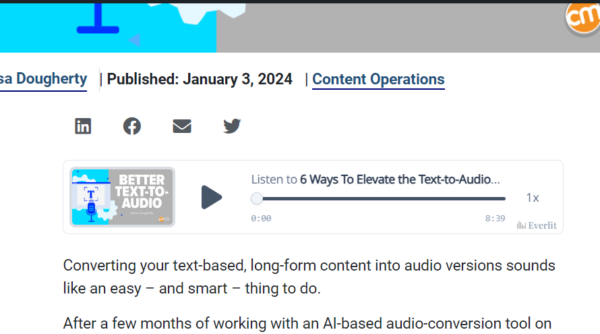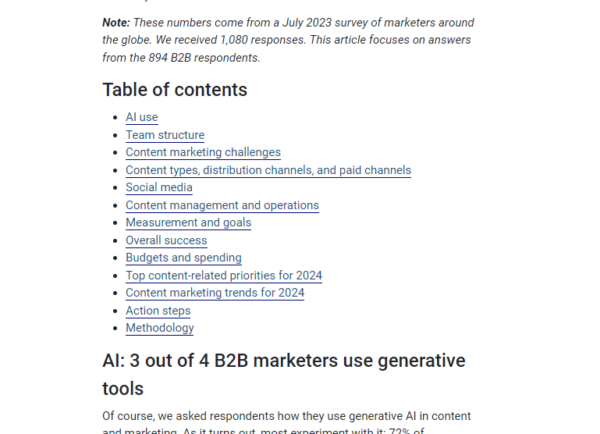What if you created content so great your audience doesn’t even realize it’s an experience?
That scenario can happen when you opt for one or more of these ideas to take your content goals beyond simple consumption and clunky experiences.
1. Write with an inclusive heart
Someone who constantly talks about themselves irritates the listener. Review your content to see how often the words I, me, we, and us are used. Now, count how often the word “you” appears. If the first-person uses outweigh the second-person frequency, edit to delete many of the first-person references and add more second-person references to the text.
Let your audience know they are included in the conversation. I like this tip shared in Take Binary Bias Out of Your Content Conversations by Content Marketing World speaker Ruth Carter: Go through your text and replace exclusionary terms such as he/him and she/her with they/them pronouns.
2. Make your content shine brighter with an AI assist
Content published online should look different than the research papers and essays you wrote in school. While you should adhere to grammar rules and follow a style guide, you also should prioritize readability. That requires scannable and easily digestible text — headings, bulleted text, short sentences, brief paragraphs, etc.
Use a text-polishing aid such as Hemingway Editor (free and paid versions) to cut the dead weight from your writing. Its color-coded review system identifies categorical problems and common fixes for them:
- Yellow — lengthy, complex sentences, and common errors
- Fix: Shorten or split sentences.
- Red — dense and complicated text
- Fix: Remove hurdles and keep your readers on a simpler path.
- Pink — lengthy words that could be shortened
- Fix: Scroll the mouse over the problematic word to identify potential substitutes.
- Blue — adverbs and weakening phrases
- Fix: Delete them or find a better way to convey the thought.
- Green — passive voice
- Fix: Rewrite for active voice.

Grammarly’s paid version works well, too. It includes an AI-powered writing assistant, readability reports, a plagiarism checker, citation suggestions, and more than 400 additional grammar checks.
In the image below, Grammarly suggests rephrasing this sentence, “It is not good enough any longer to simply produce content ‘like a media company would.’” In its place should be this version, “It is no longer good enough to produce content ‘as a media company would.’”

Much cleaner, right?
3. Ask questions
See what I did with the intro (and here)? I posed questions to engage you. When someone asks something — even in writing — the listener or reader likely pauses for a split second to consider their answer. They change from a passive participant to an active one.
This technique can also encourage readers to interact with the author by answering the questions in the comments section or by emailing.
4. Provide more formats
Adding audio makes your site more accessible to a broader audience, allowing readers to consume your content on the go. This layer of the content experience is fairly easy to do once you find your tool. We use Everlit (free for content creators), but other tools are available, such as:
- Play.ht (limited free and paid versions)
- BeyondWords (free and paid versions)
- Speechify (free with limited TTS features and paid versions)
If you’re pressed for time, simply add and keep updated a reliable audio plugin that requires minimal quality control, advises Michelle Saunders, director of content at Convince & Convert.
Don’t make audio auto-play the default. “It not only takes control away from users, but it also takes up unnecessary bandwidth, slows speed, and negatively impacts SEO,” she says.
However, if you can dedicate a person to quality control, a platform that allows customization of the audio experience is your best option. The image below shows a customized audio player with a thumbnail of the cover image and title of the article.
Want to learn more? I’ve written an article on several ways to elevate the text-to-audio experience for your content. Give it a read (or listen).

CMI also offers video and text versions of its weekly What’s New? feature. Robert Rose records the video and then shares a transcript that is modified to an article by the CMI team for the blog.

5. Include links
Content marketers include internal and external links in their text for their SEO value. But you also should add links to help your readers. Links can help a reader who wants to learn more about the topic. You can do this in a couple of ways:
- Link the descriptive text in the article to content relevant to those words (as I did in this bullet point.)
- List the headlines of related articles as a standalone feature (see the labeled Handpicked Related Content at the end of this article.)
You also can include on-page links or bookmarks at the beginning of long-form content — a table of contents, of sorts — to help the reader more quickly access the content they seek. This technique can keep visitors on your website longer because they find the information they want more quickly.
We included a linked table of contents in CMI’s annual B2B research report, listing 13 topics readers could click and go directly to.

6. Don’t forget the ‘invisible’ text
Alt text is often an afterthought if it’s considered at all. Yet, alt text for visuals is essential to a great content experience for people using text-to-speech readers. Though it doesn’t take too much time, I find that customizing the image description content instead of relying on the default text created by the tech tool works better for audience understanding.
To create the alt text, first, ask what a listener would miss if they couldn’t see the image. If they wouldn’t miss any context, the image is decorative and probably doesn’t need alt text. It might be used for aesthetic reasons to break up a text-heavy page or repeat information already in the text (as I did in the Hemingway and Grammarly examples above). You also wouldn’t need alt text if you:
If a listener misses context by not seeing the visuals, the image is informative and requires alt text. General alt-text guidelines recommend up to 125 characters (including spaces) work best. That adds up to a short sentence or two to convey the image’s message. Don’t forget to include punctuation.
For both decorative and informative images, include the photo credits, permissions, and copyright information in the caption section.
For example, if I were writing an article about Halloween costumes for cats, I would include an image of my cat Milo in a costume.
If I relied on the AI tool or wrote non-descriptive alt text, it might say: “An image showing a cat.”

A more valuable version of alt text — that doesn’t waste any valuable characters with “an image showing” would be: “Brown tiger cat with white paws, mouth, and nose in a light blue, red, and white shark costume lying on a multi-colored rug.”
The more descriptive text used only 124 characters, including spaces.
Improve your content and better the experience
Do any of these suggestions feel too hard to execute? I hope not. They don’t need a bigger budget to execute. They don’t need a lengthy approval process to implement. And they don’t demand much more time in production.
They just need you to remember to execute them the next time you create (and the time after that, and the time after that, and the … well, you get the idea.)
If you have an easy-to-implement tip to improve the content experience, please send me an email or connect with me on LinkedIn. I may include it in a future update.
All tools mentioned in this article were suggested by the author. If you’d like to suggest a tool, share the article on social media with a comment.
Updated from a January 2023 article.
HANDPICKED RELATED CONTENT:
Cover image by Joseph Kalinowski/Content Marketing Institute












![Mangools Coupon Feb 2024 [55% Off, $684 Savings🔓]](https://marketingmagnetinsider.com/wp-content/uploads/2024/02/mangools-coupon-75x75.png)








